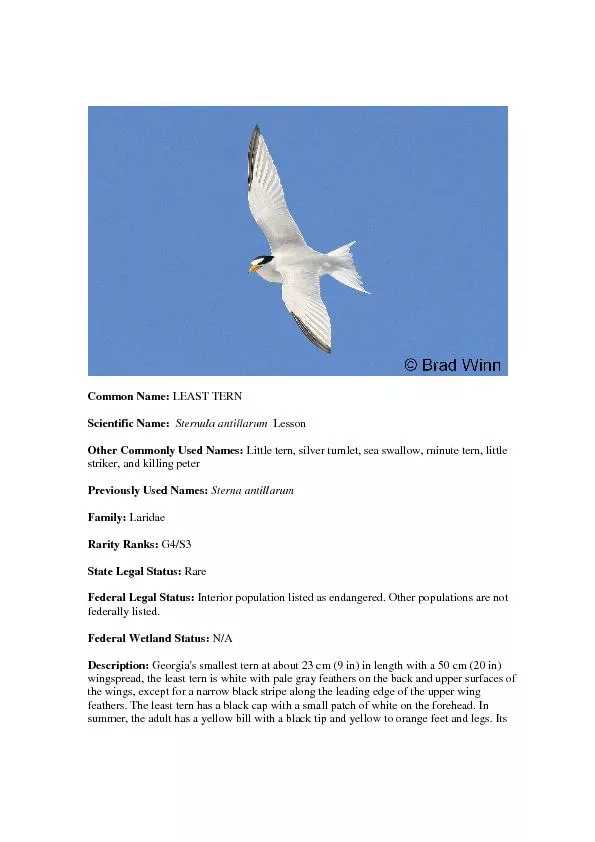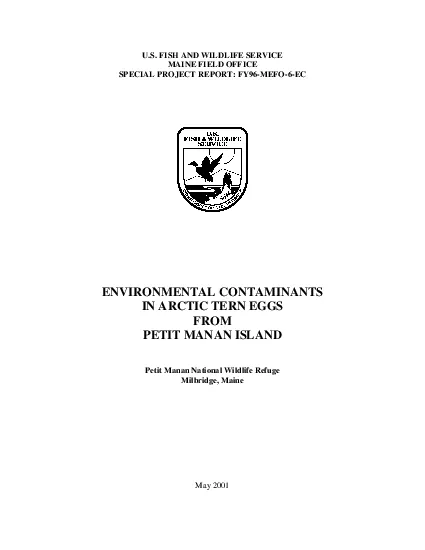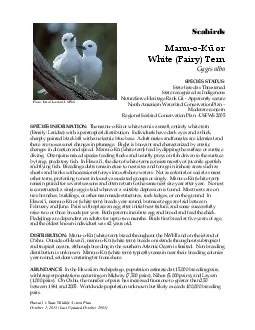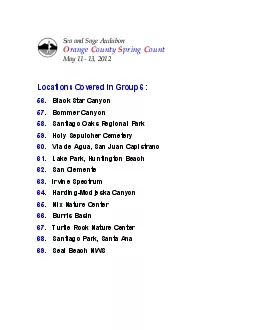PDF-Sternula antillarum Endangered Status Identification The least tern i
Author : cady | Published Date : 2021-09-30
or kitkitkit and kidick kidick and also a rasping Calls are often given in such rapid succession that two or three birds can sound Habitat New Jersey least tern
Presentation Embed Code
Download Presentation
Download Presentation The PPT/PDF document "Sternula antillarum Endangered Status I..." is the property of its rightful owner. Permission is granted to download and print the materials on this website for personal, non-commercial use only, and to display it on your personal computer provided you do not modify the materials and that you retain all copyright notices contained in the materials. By downloading content from our website, you accept the terms of this agreement.
Sternula antillarum Endangered Status Identification The least tern i: Transcript
Download Rules Of Document
"Sternula antillarum Endangered Status Identification The least tern i"The content belongs to its owner. You may download and print it for personal use, without modification, and keep all copyright notices. By downloading, you agree to these terms.
Related Documents














